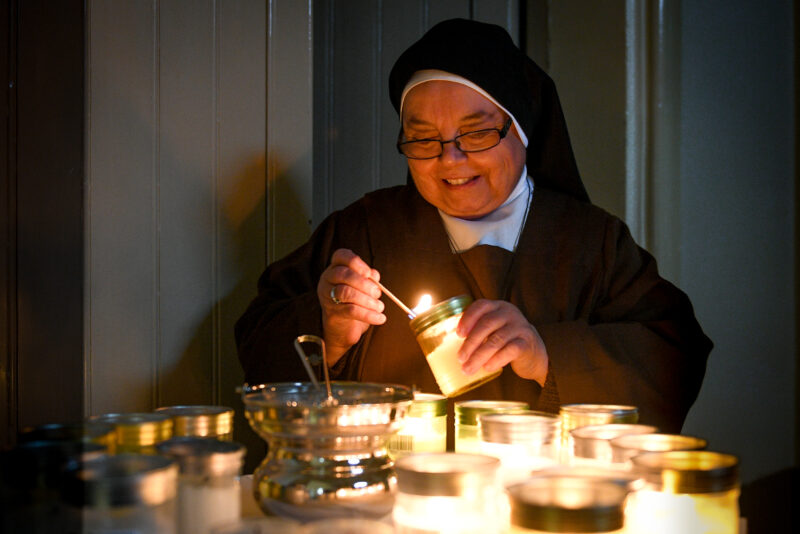Each year, on 2 February, exactly 40 days after Christmas, the Church celebrates the Solemnity of the Presentation of the Lord in the temple of Jerusalem, or as we know more frequently refer to it as il-Kandlora (Candlemas). We know that this feast was already celebrated in the 4th century in Jerusalem, and was spread in Byzantium in the 6th century, and later in Rome in the 7th century. But what do we celebrate on this day?
Actually, we celebrate one instance with two important ceremonies for the Holy Family, as it is narrated in Luke’s Gospel:
And when the time came for their purification according to the law of Moses, they brought him up to Jerusalem to present him to the Lord(as it is written in the law of the Lord, “Every male that opens the womb shall be called holy to the Lord”)and to offer a sacrifice according to what is said in the law of the Lord, “a pair of turtledoves, or two young pigeons.”
Luke 2:22-24
As a Jewish family and obedient to the law of Moses, forty days after Jesus’s birth, the Holy Family went to the temple for the purification ritual. During this rite, during this rite the woman had to,
“bring to the priest at the door of the tent of meeting a lamb a year old for a burnt offering, and a young pigeon or a turtledove for a sin offering.”
Leviticus 12:6
If the woman could not afford buying a lamb, she could take with her two turtledoves or two young pigeons, one to be burnt and the other as a purification offering. This was Mary’s case. Although Mary was pure since birth and thus this ritual was not necessary for her, at the same time as a devout Jew she observed this rite.
The Jews combined this rite with the presentation of the first-born son and his dedication to God. Since there was no steadfast rule obliging the family to do this, the presentation did not need to be carried out by a priest, thus frequently done by the parents themselves. In Jesus’ case there was Simon who took Jesus in his hands and presented him to God.
On this day, Christians commemorate both the purification of Mary—in fact, in the 1962 liturgical calendar, this was the name given to this solemnity—and also the presentation of the Lord in the temple. The names ‘Candlemas’ or ‘Kandlora’ derive from the word ‘candela’, the Latin word for candle. This is because at the beginning the mass of this solemnity the blessing of the candles takes place, followed by a procession towards the holy altar. The candles symbolise the light and, on this day, we particularly commemorate the words prophesied by Simon about Jesus as “a light for revelation to the Gentiles, and for glory to thy people Israel” (Lk 2:32).
In 1997, Pope John Paul II instituted 2 February as a day of prayer for women and men in consecrated life. This is because consecrated men and women are called to imitate in their daily lives Christ, who is the light of the world.
Stop and Reflect:
- In my life, am I guided by the Light? Is there a dark corner in my heart which I’m still refusing to allow Christ to shed his light even there?
- Am I letting the Lord to use me as His instrument to be a light for others, or through my words and actions I sometimes deviate others from the true Light?
- Ask Jesus the grace to purify you and strengthen you to choose the Light from darkness.




